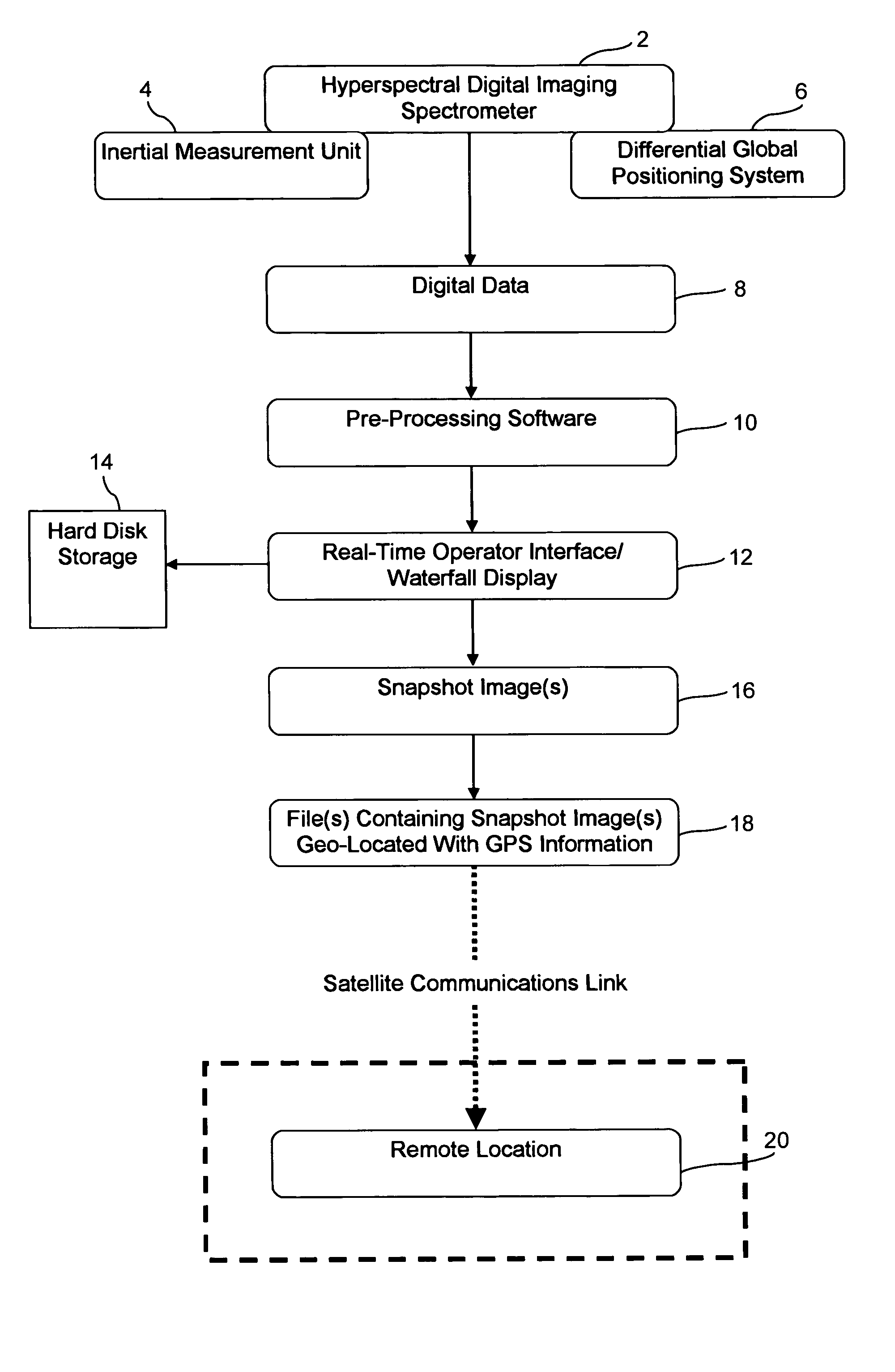Airborne imaging spectrometry system and method
a spectrometry system and spectrometry technology, applied in the field of airborne imaging spectrometry system and method, can solve the problems of lack of bandwidth, time-consuming and laborious to gather spectral data and final analysis of such data, and achieve the effect of time-critical decision making
- Summary
- Abstract
- Description
- Claims
- Application Information
AI Technical Summary
Benefits of technology
Problems solved by technology
Method used
Image
Examples
example 1
[0078] In this Example, a system according to the present invention was tested to demonstrate the ability of the system to collect hyperspectral imagery and related data during an airborne mission and transmit that imagery and data from the aircraft to a ground receiving station in near-real time. More specifically, the goal of this Example was to demonstrate this near real-time transmission of hyperspectral imagery and data in less than 15 minutes from the time the imagery and related data were collected aboard the aircraft to the time the imagery and data were received at the ground receiving station.
[0079] The area of interest in Example 1 was an area in a national forest where the U.S. Forestry Service was conducting controlled burns. Thus, the time-sensitive or time-critical decision making involved in Example 1 included making decisions in a forest firefighting application.
[0080] The aircraft in which the digital hyperspectral imaging spectrometer was mounted was a U.S. Fore...
example 2
[0107] In this Example, another airborne mission took place one day after the test flights conducted and described in Example 1 above. Specifically, the test flights in this Example continued for about 1.5 hours, and the same equipment, flight procedures, and methods from Example 1 were used, with the following exceptions: (1) additional liquid nitrogen was provided aboard the aircraft for further cooling of the thermal detectors on the DAIS 3715 spectrometer; (2) a calibration flight was conducted upon departure from the airport area rather than upon return; and (3) the procedures and hardware for installing the DAIS 3715 spectrometer in the aircraft were slightly modified to result in a more secure mounting system in the aircraft. The weather conditions during the test flights of Example 2 were favorable.
[0108] The quality of the hyperspectral imagery collected and transmitted during the test flights of Example 2 was excellent and was higher than the quality of some of the imager...
PUM
 Login to View More
Login to View More Abstract
Description
Claims
Application Information
 Login to View More
Login to View More - R&D
- Intellectual Property
- Life Sciences
- Materials
- Tech Scout
- Unparalleled Data Quality
- Higher Quality Content
- 60% Fewer Hallucinations
Browse by: Latest US Patents, China's latest patents, Technical Efficacy Thesaurus, Application Domain, Technology Topic, Popular Technical Reports.
© 2025 PatSnap. All rights reserved.Legal|Privacy policy|Modern Slavery Act Transparency Statement|Sitemap|About US| Contact US: help@patsnap.com



